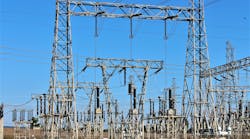The electric utility industry faces a monumental transformation. Evolving generation portfolio, increasing demand, and shifting patterns in electricity consumption, and the imperative to maintain a reliable, resilient, secure, and affordable electric grid drive this transformation, creating immense challenges. To navigate this complex landscape successfully, strategic coordination among technology, markets, and policy is not just advisable — it's essential.
The Current Landscape
Our generation portfolio is undergoing rapid changes, impacting the way the electric grid operates. The shift toward cleaner power sources is necessary to address new expectations for environmental sustainability. However, this transition places a strain on our aging electrical infrastructure, particularly as more loads switch to electricity as their primary energy source. Growing threats, including more frequent and severe natural disasters and an increased risk of physical and cyber-attacks, also impact the grid’s transformation.
Changes are taking place at both ends of the grid: generation and load. However, none of these transformations can occur without support from the Electricity Delivery System: Transmission and Distribution—the most complex part of the grid. The Office of Electricity (OE) leads national efforts to develop next-generation technologies for the electricity delivery system, ensuring a reliable, resilient, and secure electric grid in the U.S.
The Role of Office of Electricity
The Office of Electricity focuses on software, hardware, modeling, and storage that address systems integration, security, policy, and other cross-cutting issues. By driving electric grid modernization through research, demonstrations, analytics, and partnerships, OE is shaping the future of the electricity delivery system. This intricate system goes beyond merely transporting electric energy—it involves the management of interconnected components and business structures, coherently designed, and reliably operated under constantly changing conditions.
Challenges: Technical and Non-technical
The primary driver of change is our commitment to decarbonize the grid and the U.S. economy. However, we face a myriad of challenges, both technical and non-technical. Technical challenges include the rise of non-dispatchable generation requiring additional grid flexibility, the impact of invertor-based generation on grid stability, and the complexities introduced by growing distributed generation at the grid edge. Non-technical challenges encompass physical and cyber threats, energy justice concerns, workforce demands, and the globalization of supply chains.
Pathways to Net-Zero Emissions
The most plausible pathways to achieving net-zero emissions demand a significant expansion of renewables and the electrification of multiple sectors, such as buildings, industry, and transportation. Achieving this goal requires not only transitioning power production to cleaner sources but also substantial upgrades to the grid's structure and operation. The transmission and distribution network need modernization, expansion, and improvements in both efficiency and stability.
A Coordinated Strategy for Success
Moving forward, fundamental changes are necessary within the emerging grid. To succeed, the electric industry must change the way it plans, designs, and operates the electric grid. Overcoming key challenges and addressing needs in areas such as institutional decision-making, planning and analysis, system operations, and systems and components is paramount.
- Institutional Decision-Making: Creating institutional processes that align policies, customer expectations, and grid investment strategies is critical. These processes must bridge the gap between technology development and adoption, ensuring a seamless transition.
- Planning and Analysis: Developing modeling, simulation, and analytical tools is imperative to support holistic planning and system design. These tools will enable the industry to anticipate challenges and design resilient systems.
- System Operations: Performing operations with real-time situational awareness, analytics, control, and coordination is vital under varying system conditions, configurations, and market schemes. This will enhance the reliability and responsiveness of the grid.
- Systems and Components: Instituting modular and sustainable systems and components with fast dynamics will enable the grid to adapt to evolving demands and technological advancements.
Transforming the electric grid requires a coordinated strategy between technology, markets, and policy. The Office of Electricity is actively engaging all stakeholders to ensure the success of this transition. By embracing innovation, overcoming challenges, and fostering collaboration, we can build a resilient, reliable, and sustainable electric grid that meets the needs of the present while preparing for the future. The journey may be ambitious, but with strategic coordination, it is a journey we can embark on with confidence and determination.
Michael Pesin is deputy assistant secretary for the Grid Systems and Components Division in DOE’s Office of Electricity.


